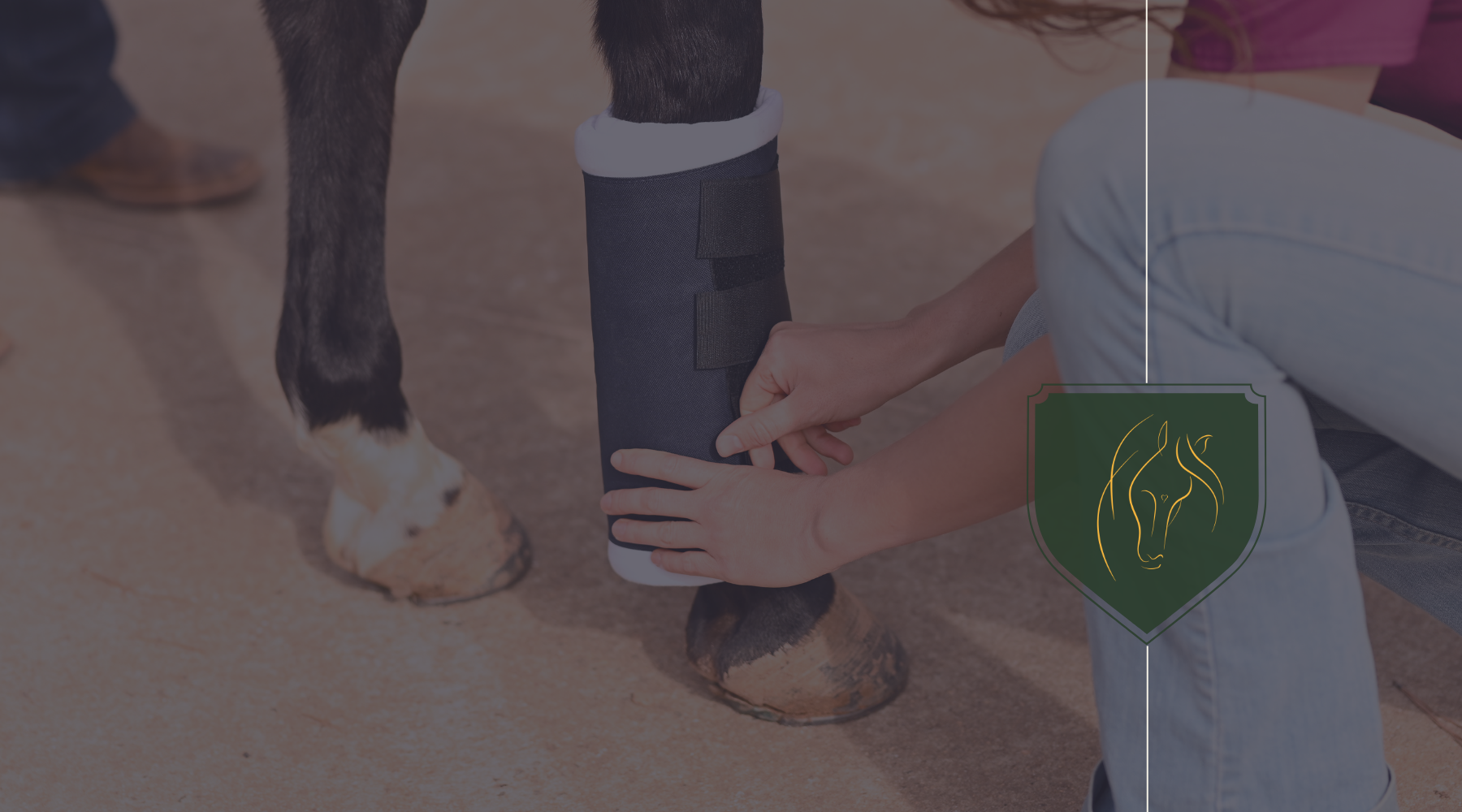When you're faced with a horse fracture, knowing the right first aid steps can be a game-changer. I've seen my fair share of equine emergencies, and I can tell you, the dos and don'ts aren't always intuitive. In this article, I'll guide you through the critical first aid measures to take when you suspect your horse has a fracture.
You'll learn how to assess the situation, provide immediate care, and understand when it's time to call the vet. I'll also cover the common mistakes many horse owners make that can worsen the injury. Whether you're a seasoned equestrian or new to horse care, these insights could make all the difference in a fracture emergency. So let's dive in and get you prepared for one of the most challenging situations you might face with your equine companion.
Assessing the Situation
When you suspect a horse fracture, your first action should be to assess the situation meticulously. I've learned from experience that keeping calm is crucial; a panicked reaction can endanger both you and the horse. Start by ensuring the area is safe for both of you and that there's no immediate risk of further injury.
Look for visible signs of a fracture. These may include:
-
Abnormal limb positioning
-
Swelling or deformation
-
The horse refusing to bear weight on the affected limb
-
Signs of pain such as flinching or vocalizing when the area is touched
Remember that some fractures aren't visually obvious. You need to be observant of subtle cues like limping or reluctance to move. It's important not to attempt any diagnosis – that's a job for the vet. My goal is to stabilize the situation until professional help arrives.
Next, restrain the horse gently to prevent unnecessary movement. Do not attempt to splint the fracture yourself. Improper splinting can cause more harm than good, and it's better to leave this to the vet.
Finally, call your veterinarian immediately. Provide them with a clear and concise description of the situation. They'll likely give you specific instructions over the phone, which you should follow carefully.
By assessing the situation properly, you increase the chances of a successful recovery for the horse. Remember, prompt and appropriate action is key to managing equine emergencies effectively. So while it may be a tense moment, trust your instincts, stay focused, and wait for the vet to arrive and take over.
Providing Immediate Care
When faced with a potential horse fracture, immediate care is imperative. My first step is always to ensure the horse is in a safe, quiet environment to prevent further injury. Minimizing movement is key, so I always look for a flat and soft surface if relocation is necessary and safe.
Stabilizing the horse is the next critical action. I approach gently to avoid spooking the injured animal, speaking in a calm, soothing voice. If I can, I'll have someone hold the horse's head to keep it still. Panic can exacerbate the injury, so I take all measures to maintain a stress-free atmosphere.
Preventing shock is a crucial element of first aid. Signs of shock can include a rapid pulse, shallow breathing, and a cold sweat. I ensure the horse is warm and comfortable by using blankets, taking care not to cover the injured area. Shock can be life-threatening, so I always keep an eye out for these symptoms.
Administering any form of medication is where I draw the line before the vet's arrival. It's tempting to give painkillers, but medication can mask symptoms which are essential for a correct diagnosis by the veterinarian. I’ve learned it's vital to wait for professional advice before administering treatments.
If the horse is wearing a shoe in the affected area, I resist the urge to remove it. Doing so may inadvertently cause more damage. It's best left for the vet who has the proper tools and expertise.
Through all these steps, I remain mindful not to put myself or others in danger. It's important to stand clear of the horse's reach in case it reacts out of pain or fear. I'm always alert and ready to move away quickly if the situation escalates before professional help arrives. Safety is never secondary; it's intertwined with every first-aid measure I take.
When to Call the Vet
Recognizing the critical nature of fractures in horses is key to their recovery. Immediate veterinary attention is often crucial for a positive outcome. But knowing when to pick up the phone can be the difference between successful rehabilitation and lifelong complications.
Here are clear indicators that it's time to call the vet:
-
Abnormal limb position: If I notice a limb that looks out of place or bent at an unusual angle, it's a strong sign of a fracture.
-
Non-weight bearing: A horse that won't put any weight on a leg is a red flag.
-
Significant swelling: When there's rapid or considerable swelling around a limb, it's important to get professional help right away.
-
Pain response: Severe lameness or a pronounced reaction to touch can indicate a serious injury.
-
Obvious trauma: If I see an open wound near a bone or joint, the risk of a compound fracture is high.
Horse owners should know their animal's normal behavior. Any sudden changes in demeanor, such as increased agitation or reluctance to move, could signal a fracture. Trust those instincts. If something feels off, it's better to err on the side of caution.
When calling the vet, I make sure to provide:
-
A brief description of the injury
-
Information on the horse's current state
-
Details of first aid efforts that have been administered
It's essential not to medicate the horse before the vet arrives as it can mask symptoms critical for diagnosis. My role is to keep the horse calm and as comfortable as possible without causing further injury until professional help arrives. Remember that a vet's guidance over the phone might also include immediate actions I can take to further protect my horse before they get there.
Veterinary expertise is indispensable in managing horse fractures. Their understanding of equine anatomy and the complications associated with fractures is invaluable. Therefore, at any sign of a severe injury, I need to act swiftly and decisively, leaving the diagnosis and treatment plan to the experts.
Common Mistakes to Avoid
When it comes to horse fractures, I've noticed that even the most experienced handlers can sometimes make critical mistakes. Avoiding these common errors can mean the difference between a speedy recovery and lasting complications for your horse.
Moving the Horse Unnecessarily
After a fracture, it's instinctual to want to bring your horse to a more comfortable location. However, moving your horse can exacerbate the injury. I always recommend securing the area around the horse instead and waiting for professional help to arrive. If it's unsafe to leave the horse where it is, only move it as instructed by the vet.
Administering Painkillers Without Vet Approval
I can't stress enough how important it is to never administer pain medication to a horse with a suspected fracture before the vet assesses the situation. Certain medications can mask symptoms, making it challenging for the vet to diagnose the fracture properly. Plus, some drugs might interact negatively with sedatives or treatments the vet needs to use later.
DIY Splinting or Casts
I've seen my fair share of well-meaning individuals attempting to splint a horse's fractured limb. This is a mistake. Without appropriate training, you're likely to do more harm than good. The wrong kind of support can damage blood vessels or nerves, and it's incredibly easy to cause further injury. My best advice is to leave this to the professionals.
Delaying Vet Care
Early intervention is crucial for fractures. I've learned that delaying veterinary care with the hope that a horse’s situation might improve can lead to serious complications. Always make the call to your vet immediately. Time is of the essence in these scenarios, and prompt, professional care is critical for the best outcomes.
These are just a few of the mistakes that can occur when handling a horse with a fracture. Remember, the top priority is the safety and well-being of the animal. Ensuring you avoid these errors and acting quickly can make a significant difference.
Conclusion
Handling a horse with a suspected fracture can be a nerve-wracking experience but remembering the key points I've shared can make all the difference. It's crucial to prioritize the horse's safety and your own as you assess the situation. Remember to avoid the common pitfalls like unnecessary movement or administering medication without a vet's guidance. Your swift action in calling the vet and providing an accurate account of the injury can significantly influence the outcome for your horse. Stay informed stay calm and always act with the horse's welfare in mind. Your preparedness and knowledge are invaluable in these critical moments.
Frequently Asked Questions
Q: What are the signs of a horse fracture?
A: Signs of a horse fracture may include abnormal limb positioning, swelling, or the horse refusing to bear weight on the affected limb.
Q: Should I attempt to diagnose the fracture myself?
A: No, it is important not to attempt any diagnosis yourself. Leave it to the veterinarian to assess the situation accurately.
Q: What should I do if I suspect a horse fracture?
A: If you suspect a horse fracture, call a veterinarian immediately and provide a clear description of the situation.
Q: Can I move the horse if I suspect a fracture?
A: Avoid moving the horse unnecessarily to prevent further injury. Wait for the veterinarian to give guidance.
Q: Can I administer painkillers to the horse without vet approval?
A: No, do not administer painkillers without veterinary approval. This could mask the severity of the injury and hinder accurate diagnosis.
Q: Is DIY splinting or cast application recommended?
A: No, leave splinting and casting to the veterinarian. DIY attempts can cause more harm than good.
Q: How important is it to seek prompt veterinary care for a horse fracture?
A: It is crucial to seek prompt veterinary care for a horse fracture. Delaying treatment can worsen the condition and lead to complications.
Q: What are the common mistakes to avoid when dealing with a horse fracture?
A: Common mistakes to avoid include unnecessary movement of the horse, administering painkillers without vet approval, attempting DIY splinting, and delaying veterinary care.
Q: Why is it important to act quickly when a horse fracture occurs?
A: Acting quickly when a horse fracture occurs ensures the safety and well-being of the horse. Prompt medical attention is essential for proper treatment and recovery.






Leave a comment
This site is protected by hCaptcha and the hCaptcha Privacy Policy and Terms of Service apply.